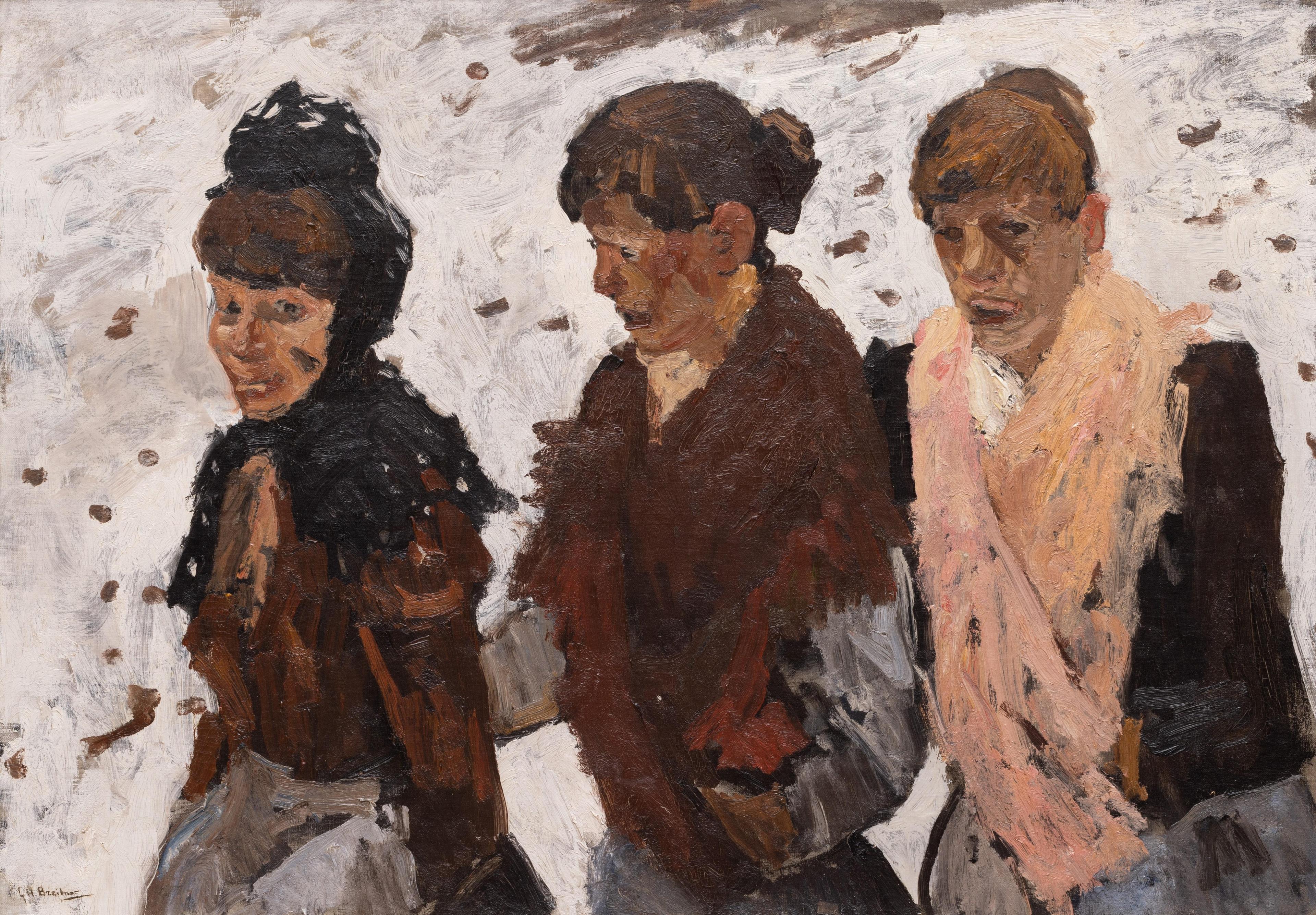
Beschrijving
Signed 'G.H. Breitner' (lower left). Learn more about this work through our expert's voice video: https://www.youtube.com/watch?v=A5cg4Klresc
Exhibited:
-Utrecht, Centraal Museum, 1926.
-Amsterdam, Stedelijk Museum, 1932 (on loan by W. Bogaerdt).
Literature:
-H.P. Bremmer, 'Beeldende Kunst', Vol. 13, 1926, no. 46.
Provenance:
-Collection W. Bogaerdt, by 1932.
-With Kunsthandel Huinck en Scherjon, 1938-1939.
-Auction, Frederik Muller, Amsterdam, 17 April 1956, lot 669 (Sold for: 10,500 Dfl.).
-With Kunsthandel I. Bouwman, The Hague, 1975-1976.
-With Van Voorst van Beest Gallery, The Hague, exhibition 1 November-23 December 1984, ill. in brochure p. 14.
-Collection Dr. J. ten Bokkel; His auction, Sotheby’s, Amsterdam, 24 April 2006, lot 193.
-The property of a lady.
George Hendrik Breitner was a great painter and an exceptionally talented photographer. More than 2,000 negatives of him have been preserved. All of them are from his Amsterdam period, so from 1886 onwards. He used photography as study material for his paintings, to complement and as a reminder. But the power of his painting, and the colours, could not be captured in his photographs. He walked endlessly through old Amsterdam in all seasons - allowing himself to be carried away by the big city bustle, watching from a distance how the crowd moved; and how maids walked arm in arm across the street.
Breitner spent his academy years in The Hague, Rotterdam, Amsterdam, and Paris. He had close contacts with painters of the Hague School; the three Maris brothers, Anton Mauve, and Hendrik Willem Mesdag. They taught him to see the tonal values in a colour, and build up a painting with various shades of light. He found a kindred spirit in Vincent van Gogh with whom he regularly drew the ‘common people’ during his time in The Hague. He wrote about this in a letter of 1882: ‘Ik zelf, Ik zal de mensch schilderen op de straat en in de huizen de straten en huizen die ze gebouwd hebben ‘t leven vooral. Le peintre du peuple zal ik trachten te worden of liever ben ik al omdat ik ’t wil’. During his Amsterdam days, he joined a circle of young painters, including Willem Witsen and Isaac Israels, who were aware that they were part of a new era. The city of Amsterdam was growing fast and renewing itself in the fields of business, industry and trade.
Breitner became, as it were, a visual reporter of this. His attention was focused on the turbulent life of the inner city. His way of drawing and painting became more expressive, more direct. We see colourful, wildly smeared paint surfaces. He paints women of the ‘Jordaanse type’. Not always attractive, but absolute characters. He provided them with coarse, primitive facial features, which often gave an unpolished result. These types included the koffiepiksters (coffee pickers), the waspitten (factory workers) and the dienstbodes (housemaids). Breitner was also able to portray the feeling of cold on a bleak day. In his time, not everyone was enamoured with such a direct depiction. One critic spoke of ‘Amsterdam mops, blown up and in a shoddy draughtsmanship’.
Breitner experimented with different viewpoints. He often made the heads stand out against a clear sky. In the painting ‘Three girls in the snow’ - painted in the last decade of the nineteenth century - he chose a slightly higher point of view. The three figures fill almost the entire composition: the image bears witness to a photographic vision. The women’s’ heads and clothes stand out sharply against the drab snow in the background. This style corresponds to the artist’s character. People who knew Breitner described him as ‘often fierce and brusque in his actions, sometimes suddenly rigid and closed, living between fits of passion and despondency and always completely obsessed with his art’. (quote from A. van Schendel, Amsterdam, 1939).
Drie meiden in de sneeuw
Breitner, George Hendrik
(Rotterdam, 12 september 1857
-
Amsterdam,
5 juni 1923)
Details
- Databanknummer:
- 89229
- Lotnummer:
- -
- Advertentietype
- Archief
- Instelling:
- Venduehuis Den Haag
- Veilingdatum:
- -
- Veilingnummer:
- -
- Stad
- -
- Limietprijs
- -
- Aankoopprijs
- -
- Verkoopprijs
- -
- Hamerprijs
- -
- Status
- Verkocht
Technische details
- Kunstvorm:
- Schilder- en Tekenkunst
- Technieken:
- Olieverf
- Dragers:
- Doek
- Lengte:
- 71 cm
- Breedte:
- 100 cm
- Hoogte:
- -
- Oplage:
- -
Beschrijving
Signed 'G.H. Breitner' (lower left). Learn more about this work through our expert's voice video: https://www.youtube.com/watch?v=A5cg4Klresc
Exhibited:
-Utrecht, Centraal Museum, 1926.
-Amsterdam, Stedelijk Museum, 1932 (on loan by W. Bogaerdt).
Literature:
-H.P. Bremmer, 'Beeldende Kunst', Vol. 13, 1926, no. 46.
Provenance:
-Collection W. Bogaerdt, by 1932.
-With Kunsthandel Huinck en Scherjon, 1938-1939.
-Auction, Frederik Muller, Amsterdam, 17 April 1956, lot 669 (Sold for: 10,500 Dfl.).
-With Kunsthandel I. Bouwman, The Hague, 1975-1976.
-With Van Voorst van Beest Gallery, The Hague, exhibition 1 November-23 December 1984, ill. in brochure p. 14.
-Collection Dr. J. ten Bokkel; His auction, Sotheby’s, Amsterdam, 24 April 2006, lot 193.
-The property of a lady.
George Hendrik Breitner was a great painter and an exceptionally talented photographer. More than 2,000 negatives of him have been preserved. All of them are from his Amsterdam period, so from 1886 onwards. He used photography as study material for his paintings, to complement and as a reminder. But the power of his painting, and the colours, could not be captured in his photographs. He walked endlessly through old Amsterdam in all seasons - allowing himself to be carried away by the big city bustle, watching from a distance how the crowd moved; and how maids walked arm in arm across the street.
Breitner spent his academy years in The Hague, Rotterdam, Amsterdam, and Paris. He had close contacts with painters of the Hague School; the three Maris brothers, Anton Mauve, and Hendrik Willem Mesdag. They taught him to see the tonal values in a colour, and build up a painting with various shades of light. He found a kindred spirit in Vincent van Gogh with whom he regularly drew the ‘common people’ during his time in The Hague. He wrote about this in a letter of 1882: ‘Ik zelf, Ik zal de mensch schilderen op de straat en in de huizen de straten en huizen die ze gebouwd hebben ‘t leven vooral. Le peintre du peuple zal ik trachten te worden of liever ben ik al omdat ik ’t wil’. During his Amsterdam days, he joined a circle of young painters, including Willem Witsen and Isaac Israels, who were aware that they were part of a new era. The city of Amsterdam was growing fast and renewing itself in the fields of business, industry and trade.
Breitner became, as it were, a visual reporter of this. His attention was focused on the turbulent life of the inner city. His way of drawing and painting became more expressive, more direct. We see colourful, wildly smeared paint surfaces. He paints women of the ‘Jordaanse type’. Not always attractive, but absolute characters. He provided them with coarse, primitive facial features, which often gave an unpolished result. These types included the koffiepiksters (coffee pickers), the waspitten (factory workers) and the dienstbodes (housemaids). Breitner was also able to portray the feeling of cold on a bleak day. In his time, not everyone was enamoured with such a direct depiction. One critic spoke of ‘Amsterdam mops, blown up and in a shoddy draughtsmanship’.
Breitner experimented with different viewpoints. He often made the heads stand out against a clear sky. In the painting ‘Three girls in the snow’ - painted in the last decade of the nineteenth century - he chose a slightly higher point of view. The three figures fill almost the entire composition: the image bears witness to a photographic vision. The women’s’ heads and clothes stand out sharply against the drab snow in the background. This style corresponds to the artist’s character. People who knew Breitner described him as ‘often fierce and brusque in his actions, sometimes suddenly rigid and closed, living between fits of passion and despondency and always completely obsessed with his art’. (quote from A. van Schendel, Amsterdam, 1939).
Geen prijsinformatie? Sluit een abonnement af.
Aangeboden kunst
Een selectie uit ons kunstaanbod

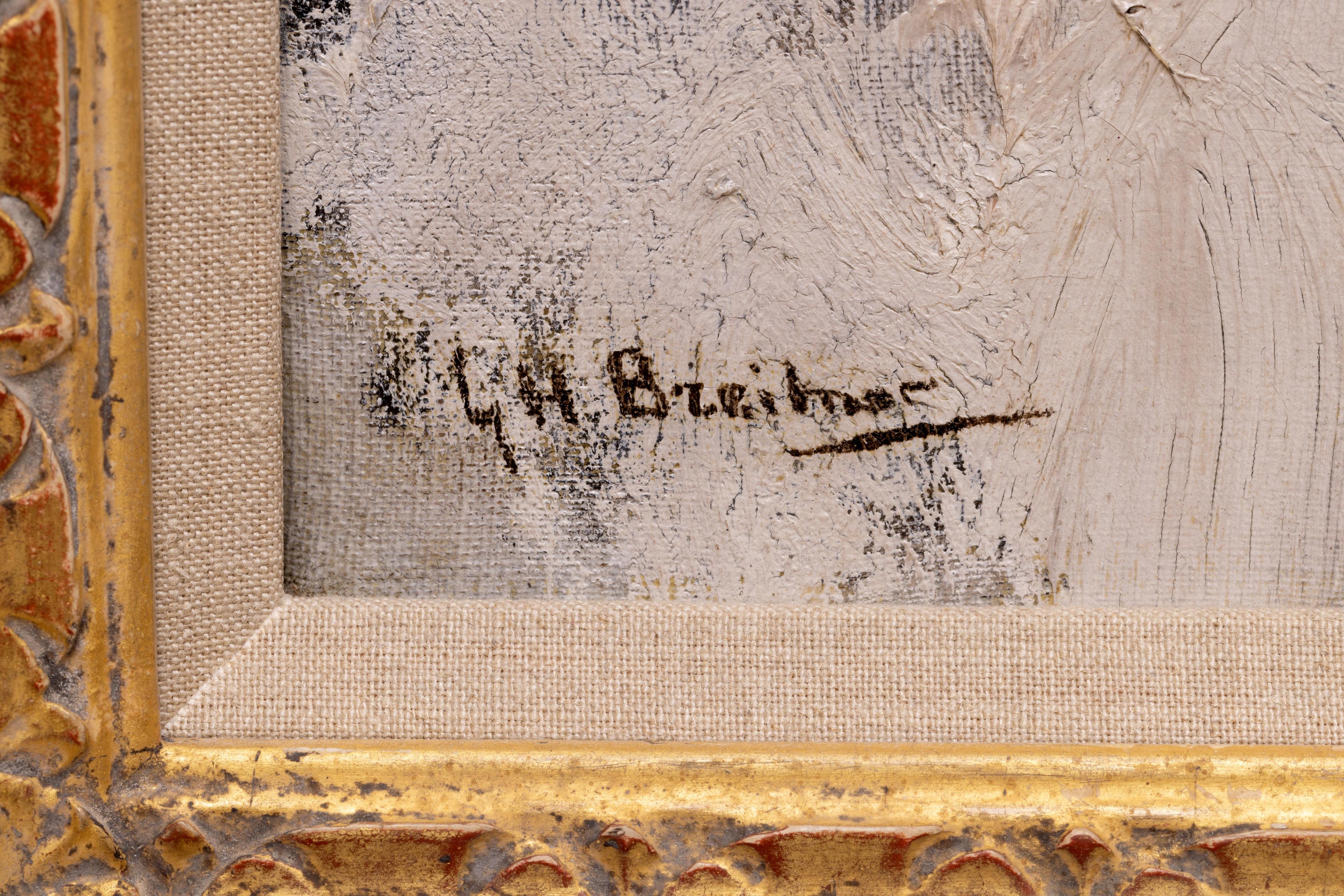
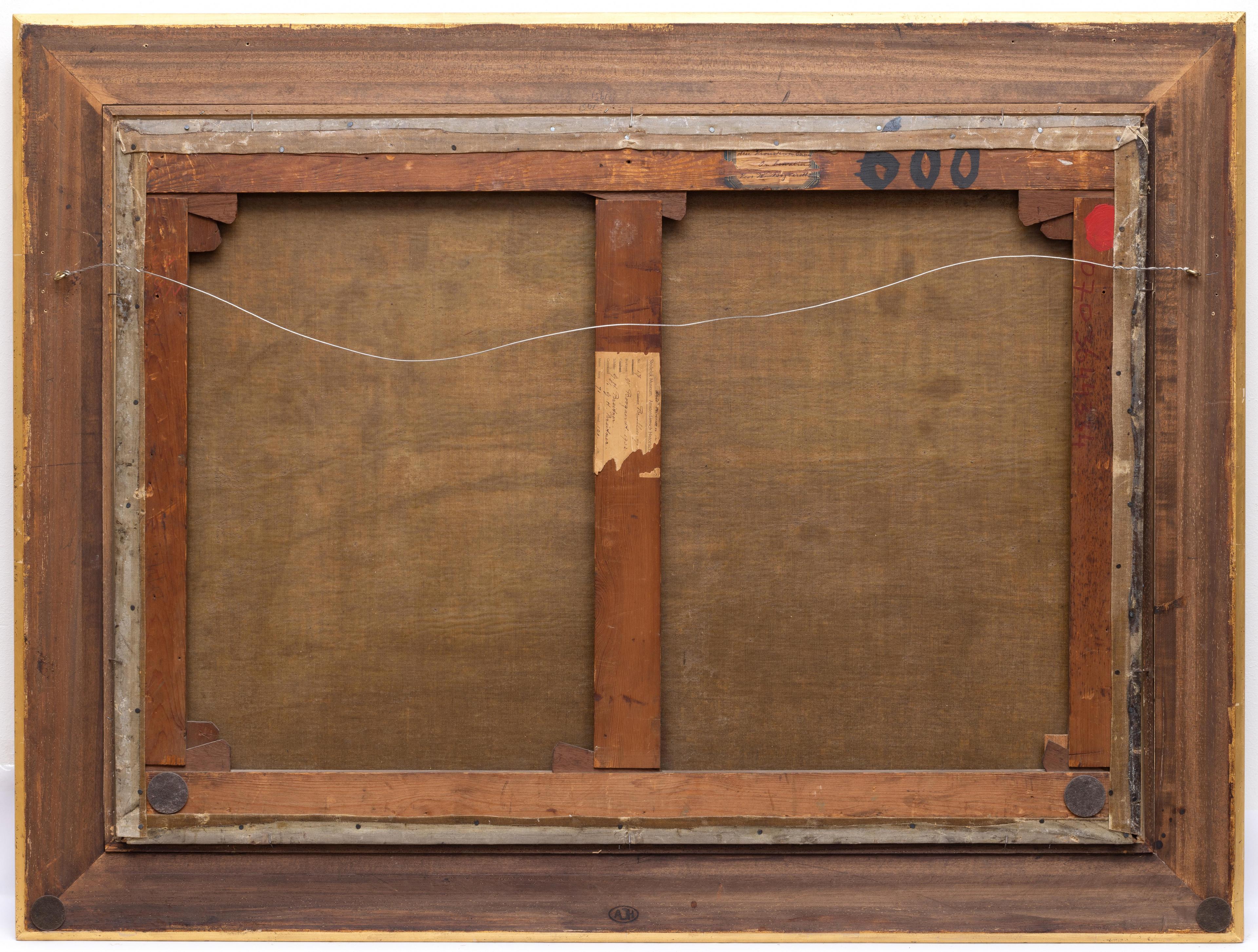
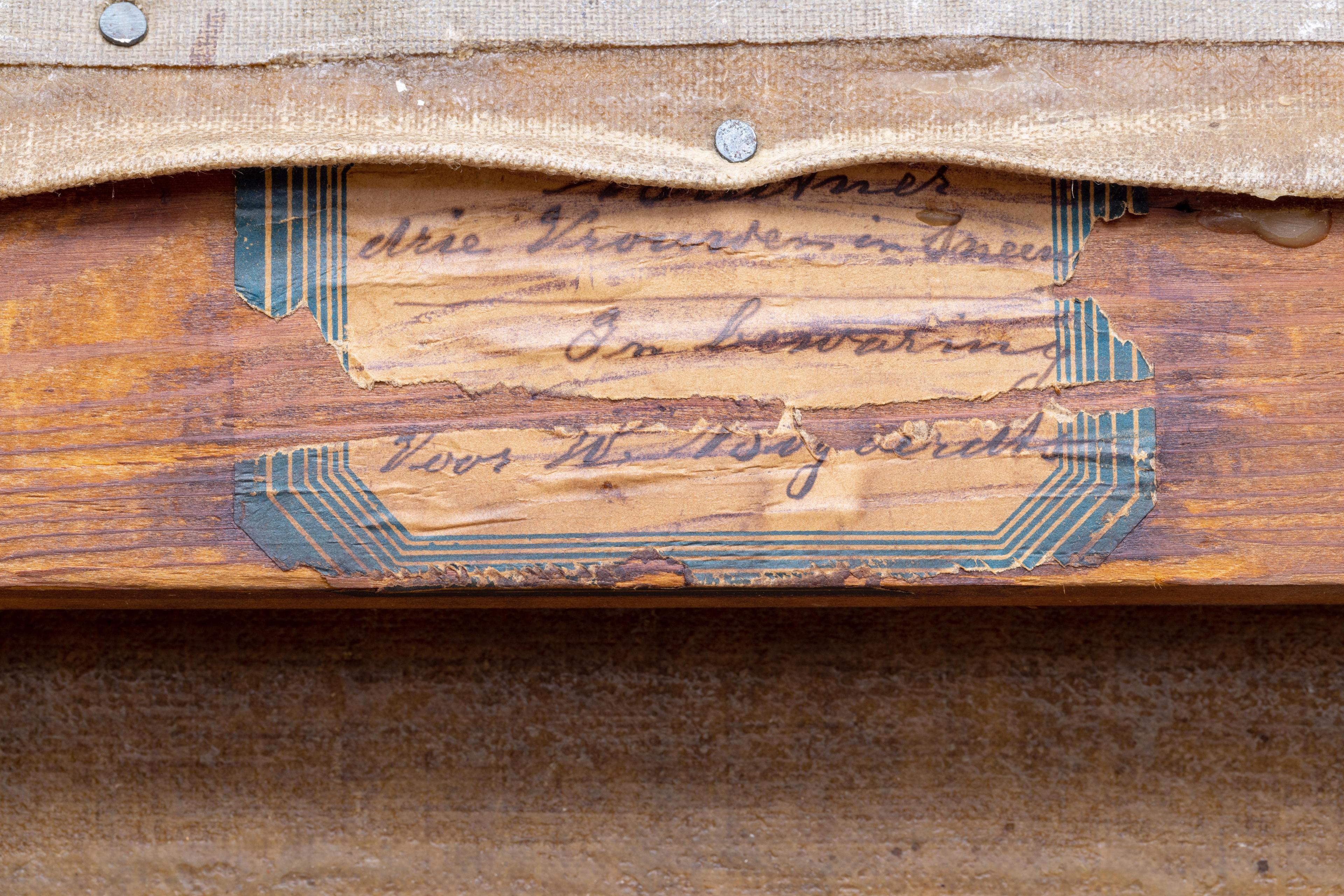
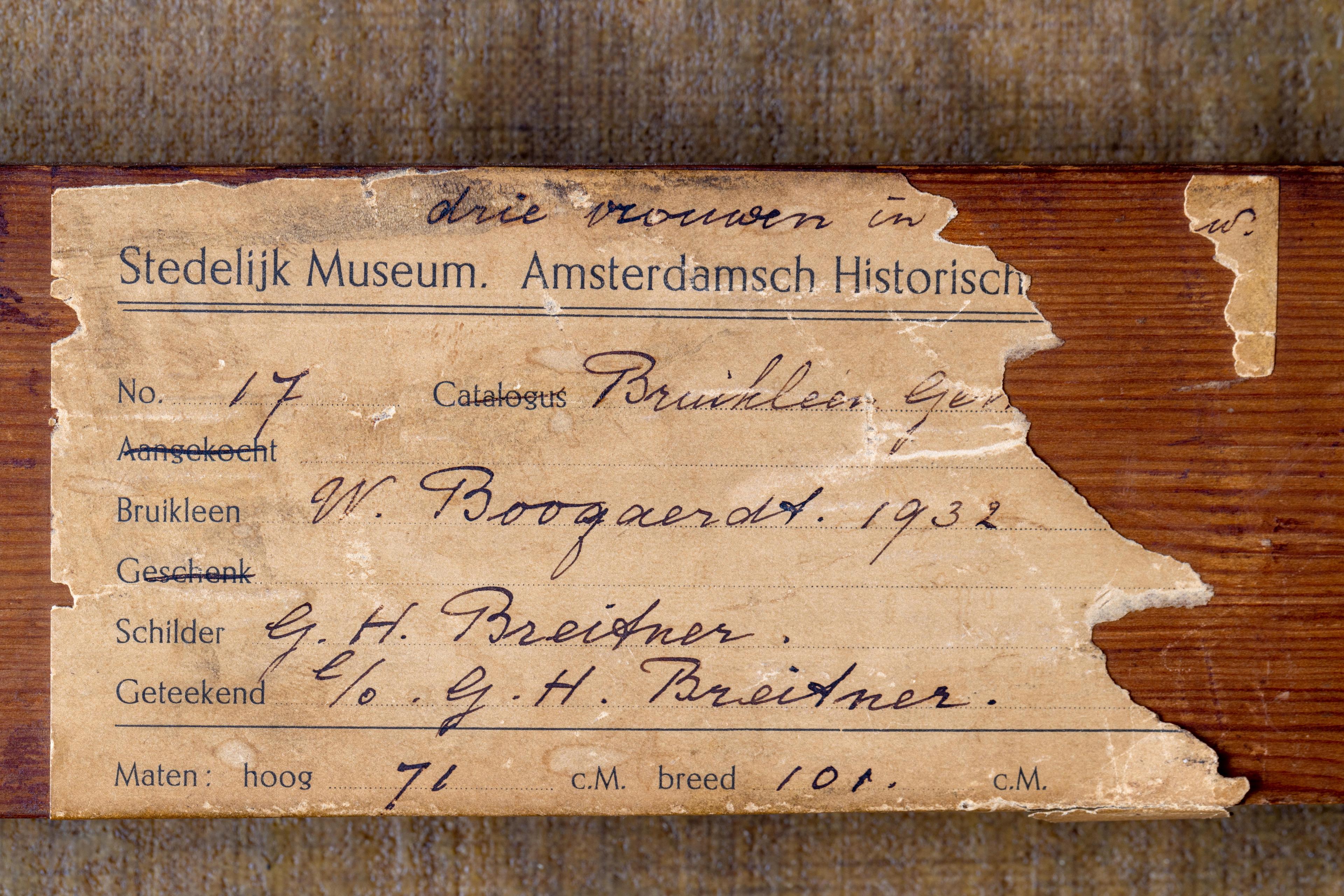
-DESKTOP.jpg)
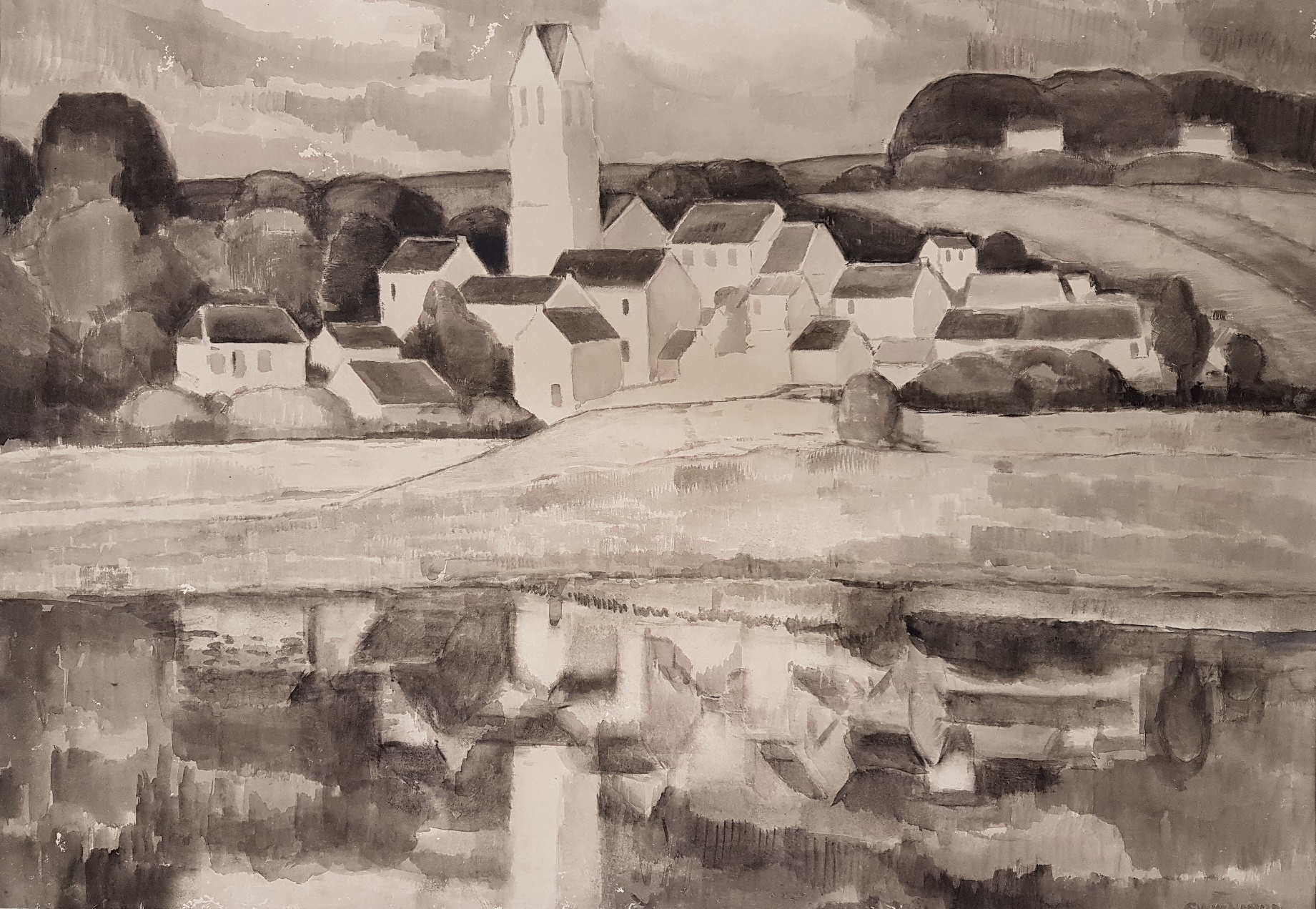
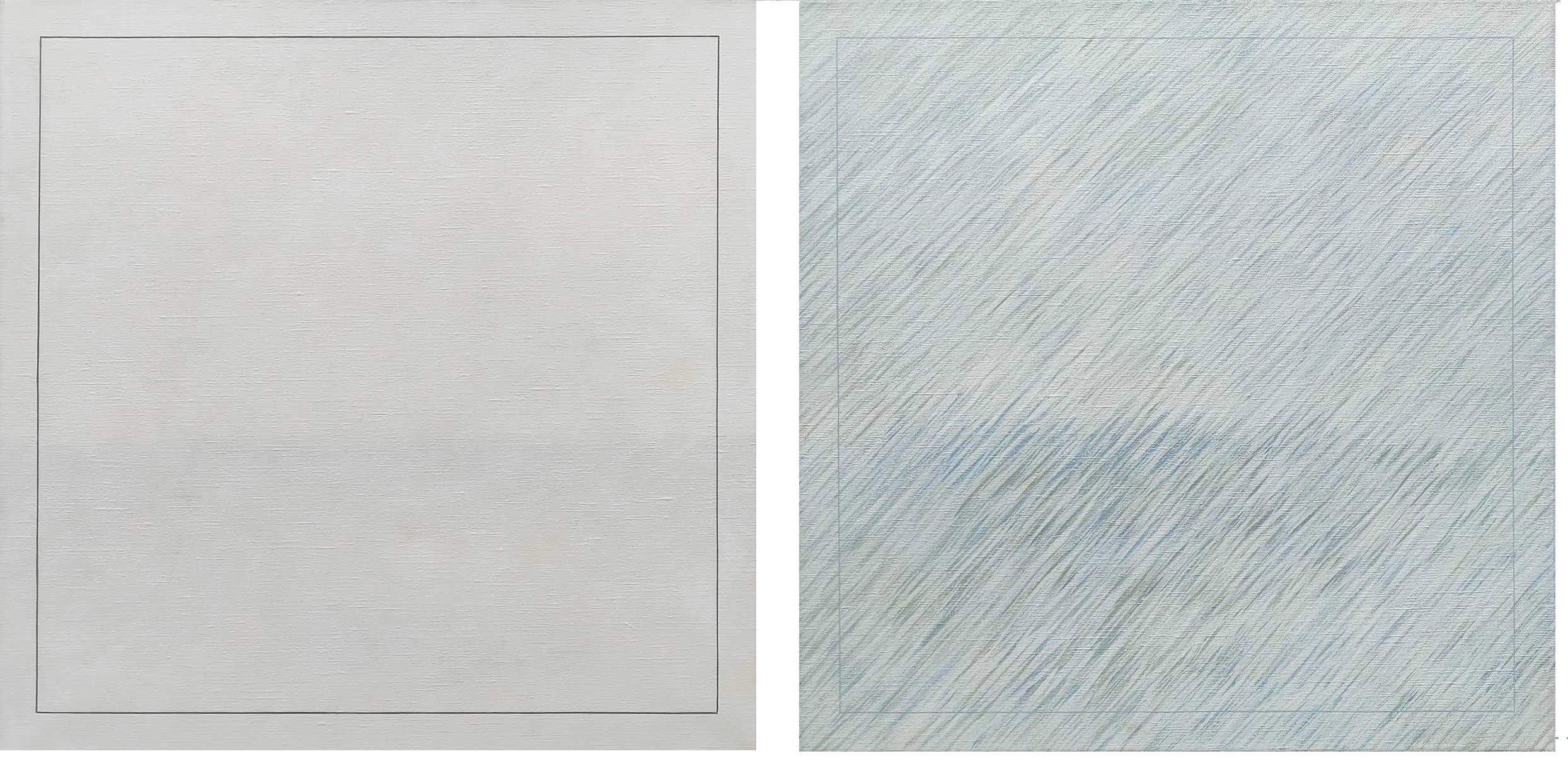
.jpg)